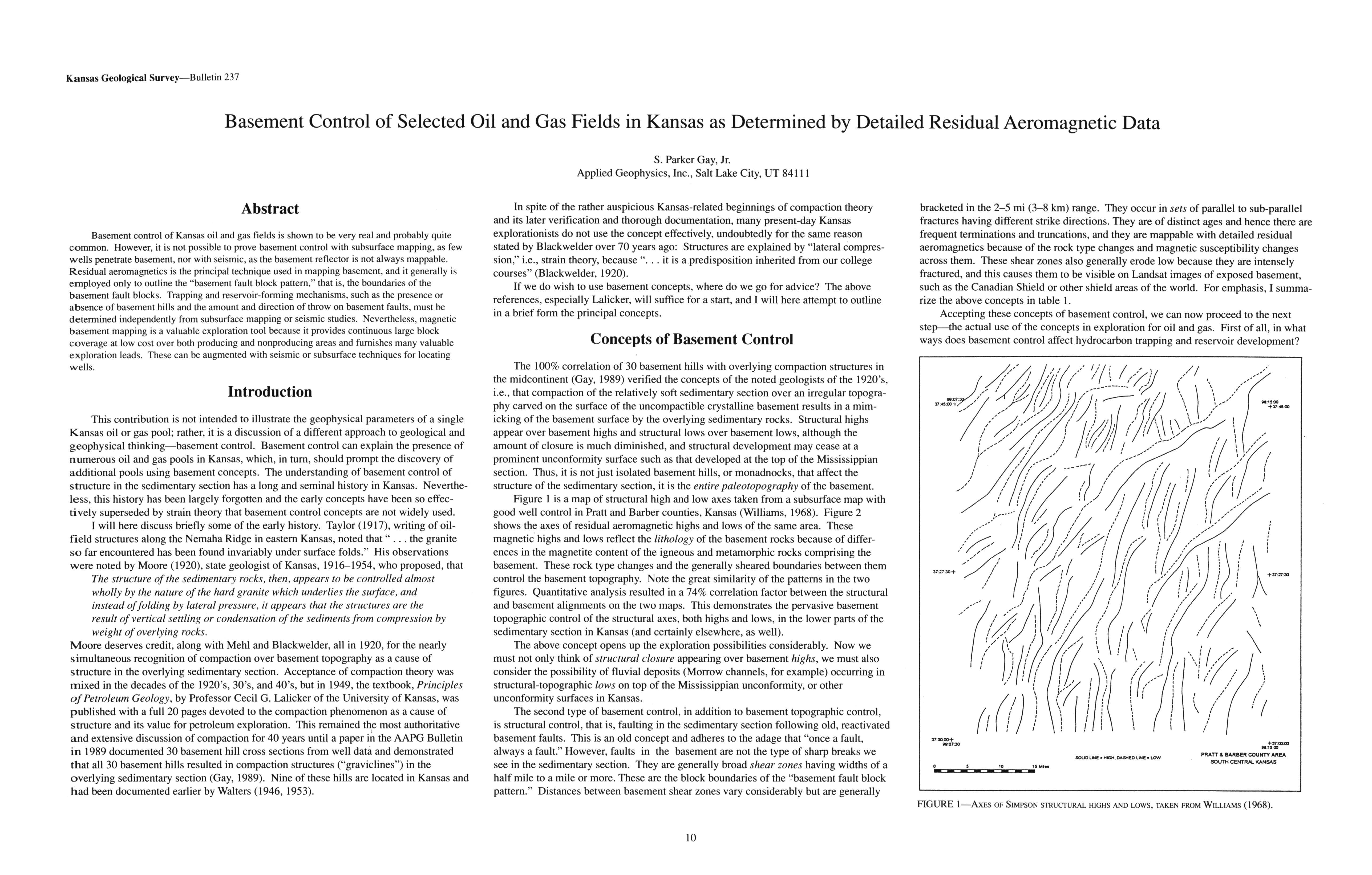Basement Control of Selected Oil and Gas Fields in Kansas as Determined by Detailed Residual Aeromagnetic Data
DOI:
https://doi.org/10.17161/kgsbulletin.no.237.20415Abstract
Basement control of Kansas oil and gas fields is shown to be very real and probably quite common. However, it is not possible to prove basement control with subsurface mapping, as few wells penetrate basement, nor with seismic, as the basement reflector is not always mappable. Residual aeromagnetics is the principal technique used in mapping basement, and it generally is employed only to outline the "basement fault block pattern," that is, the boundaries of the basement fault blocks. Trapping and reservoir-forming mechanisms, such as the presence or absence of basement hills and the amount and direction of throw on basement faults, must be determined independently from subsurface mapping or seismic studies. Nevertheless, magnetic basement mapping is a valuable exploration loa I because it provides continuous large block coverage at low cost over both producing and nonproducing areas and furnishes many valuable exploration leads. These can be augmented with seismic or subsurface techniques for locating wells.
Downloads

